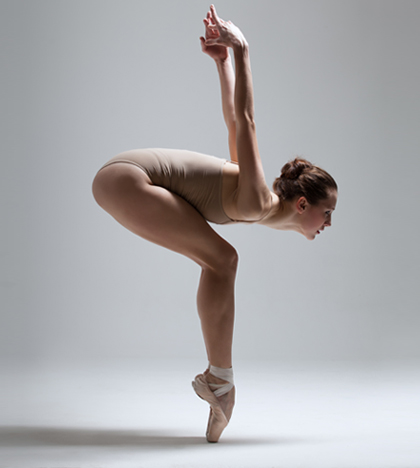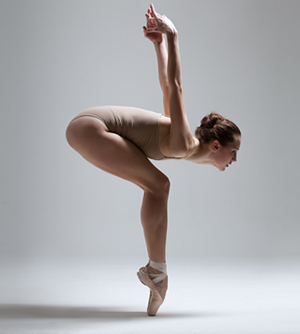The Plié is Your Friend
Did you know that little movement called the plié is one of the most important steps in all your dance training? It’s true!
Here are some facts about why the plié can, and should be your best friend in every class, rehearsal, and performance.
THE PLIÉ DEFINED
The origin of the word plié comes from the French verb pliér, which means to bend. Merriam-Webster dictionary defines the plié as “… a bending of the knees outward by a ballet dancer with the back held straight.”
Yet dancers who have spent years working to perfect this seemingly simple movement know the plié is really much more. The complex little devil is actually the secret ingredient to gorgeous turns, jumps, pointe work, and overall freedom of movement in dance. Not to mention, a strong plié will help reduce the risk of injury throughout the career of a dancer.
PLIÉ BASICS
The plié is one of the first steps learned in ballet technique class, and it is one performed throughout the life of a dancer. At the barre, the plié is practiced in both demi-plié and grand plié. Throughout the exercises, the spine is extended and the pelvis remains fluid and neutral as it drops and rises.
Plié exercises at the ballet barre help to warm up and strengthen the muscles and joints of the feet, legs, hips and core. As a transitioning step, the plié plays a key role in moving from one step to the next both at the barre and in center.
A strong and properly performed demi-plié provides the power behind every turn, relevé, and jump not only in ballet, but in contemporary dance forms too. The pliant plié controls the finish of a graceful pirouette and provides a soft, injury-free landing from small and large jumps. A luxurious plié creates the beautiful transitions and graceful ballon that allows a dancer to appear as though she is effortlessly gliding across the stage.
PERSONAL PLIÉ CONNECTIONS
We joke about the plié being your best friend. But there often exists a true emotional or personal connection between dancers and their pliés. Pliés at the barre may be the place of calm and focus that a professional uses to mentally prepare for a performance. Just the word plié may bring back childhood memories of a certain ballet class or teacher. Here’s what a few experienced dancers had to say about what they think the moment they hear the word plié.
“Believe it or not, an image comes to mind. I can see myself at about six or seven years old looking down while I do plié in first position and my teacher Marcia knelt down on the floor guiding my knees over my toes.” Ashley Bouder, Principal, New York City Ballet
“The first thing I think of when I hear plié is open from the hips.” Maria Chapman, Principal, Pacific Northwest Ballet
“An image of me at the barre doing a plié in first position; a sense of release and preparation; a mindset that states, ‘Here we go.'” Kimberly Braylock, San Francisco Ballet
“When I hear the word plié, I think of harmony, safety, the beginning and the end.” Juliet Doherty, student at San Francisco Ballet School
“The word ballet comes to mind first.” Makenzie Dustman, So You Think You Can Dance, Season 10
“The first thing that comes to my mind is foundation. Pliés are the first thing we do to prepare our bodies to dance. They are also necessary for all movements, otherwise we’d be like wooden dolls rather than fluid ballet dancers!” Mimi Tompkins, apprentice with National Ballet of Canada
The first thing I think of when I hear the word plié is, foundation. It’s the foundation of so many steps that we execute as dancers. From high jumps, and dynamic turns, to soft transitional steps that lead to beautiful balances. We should recognize all of the unique moments that rely on this seemingly simple movement.” Margaret Mullin, Soloist, Pacific Northwest Ballet
TECHNICAL TIPS
Interested in perfecting your plié? Try these tips and feel free to share your own in the comments section of this post.
- Even Distribution of Weight – A study done with the Ballets de Monte-Carlo describes the importance of evenly distributing the weight over three points of the foot in a demi-plié. To start, imagine spreading the weight between the first and fifth toes, and the heel of the foot. Before beginning the plié, imagine a force extending down and out the back of the heel at a 30 degree angle into the floor. This will moderately engage the hamstrings. Continue the down and out force through the heel as you lower and rise from the demi-plié. The results of the study using this technique showed optimal foot position, and stabilizing support for the pelvis and spine to eliminate bucking motions in jumps, turns, and more.
- The Flying Carpet – Imagery often helps with a dancer’s mind-body connection for improvement of technique. Eric Franklin, author of the book Dynamic Alignment through Imagery suggests you think of a flying carpet during your next plié. “Imagine the pelvic floor to be a flying carpet that lifts and supports the pelvis and torso as you move. The flying carpet supports the pelvis gently and frees the legs.” Imagining the pelvic floor floating will help maintain a neutral spine, and engage the proper leg muscles for turnout and alignment support.
- Grand Plié Tips – The Royal Academy of Dancing provides this advice to young students performing a grand plié in its guide to official ballet syllabus, “The movement downwards should be very smooth, and when you have arrived in the position … your knees should still be over your toes, your back should still be upright and placed over your feet … and you should be able to feel all of your toes on the floor … remember that coming up takes just as long as going down, so there is no jerking of the muscles – they don’t like it!”





2 thoughts on “The Plié is Your Friend”
Comments are closed.